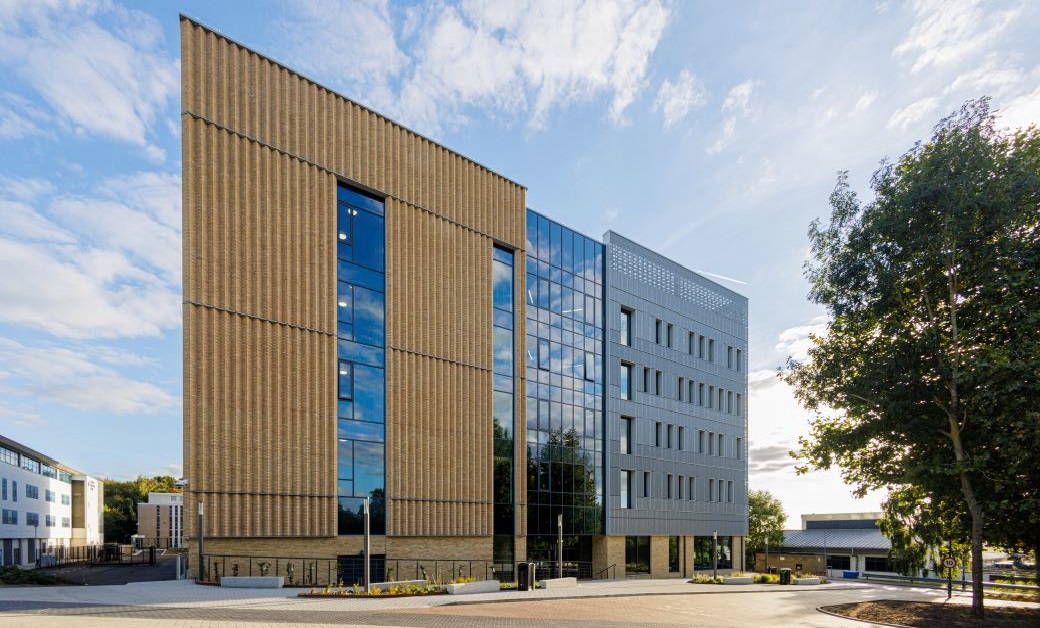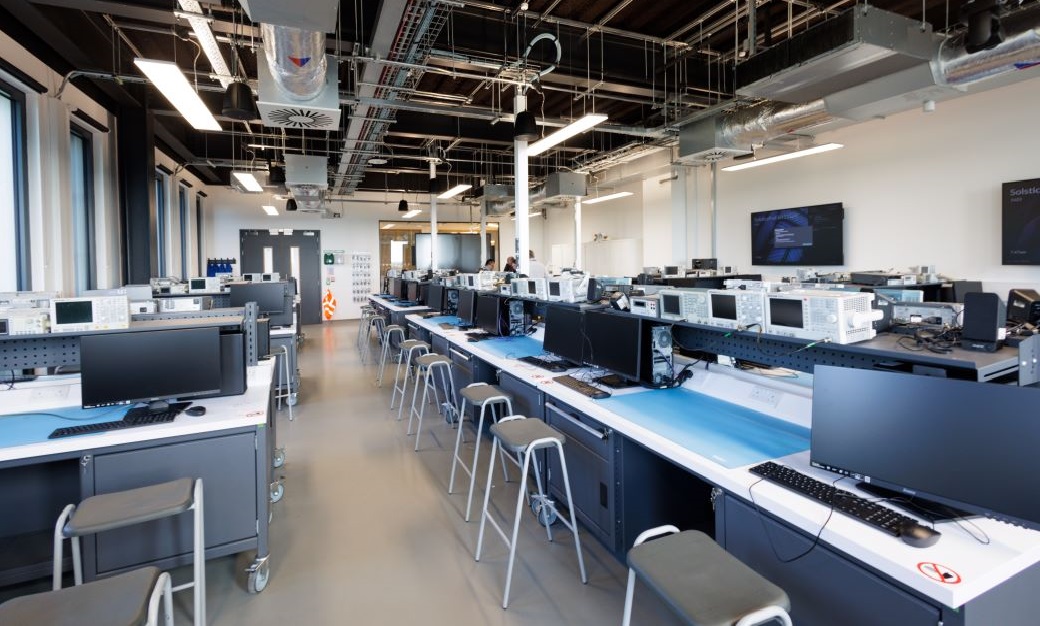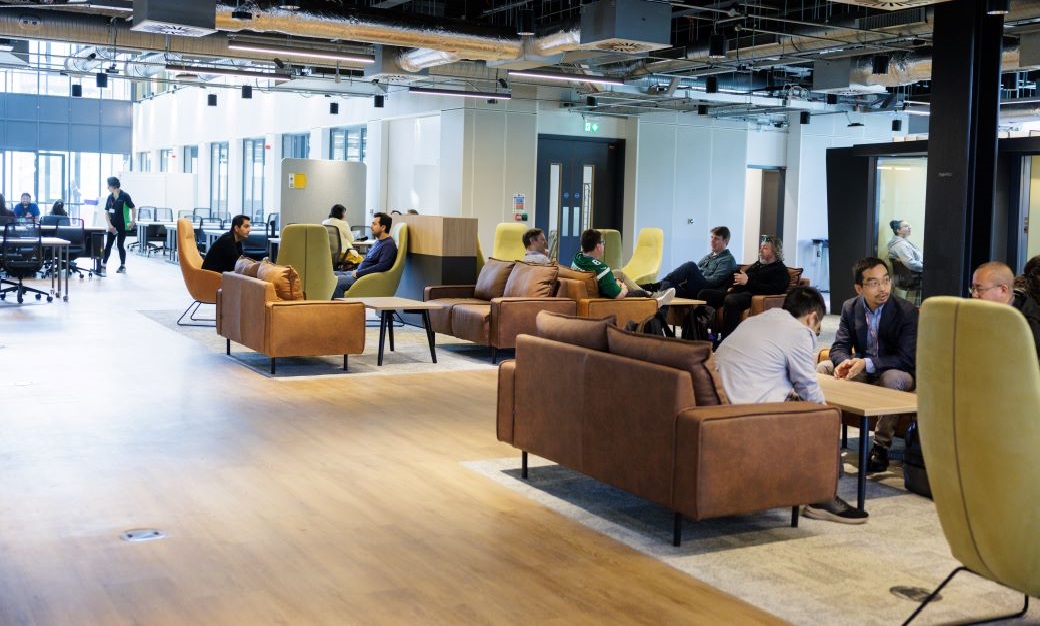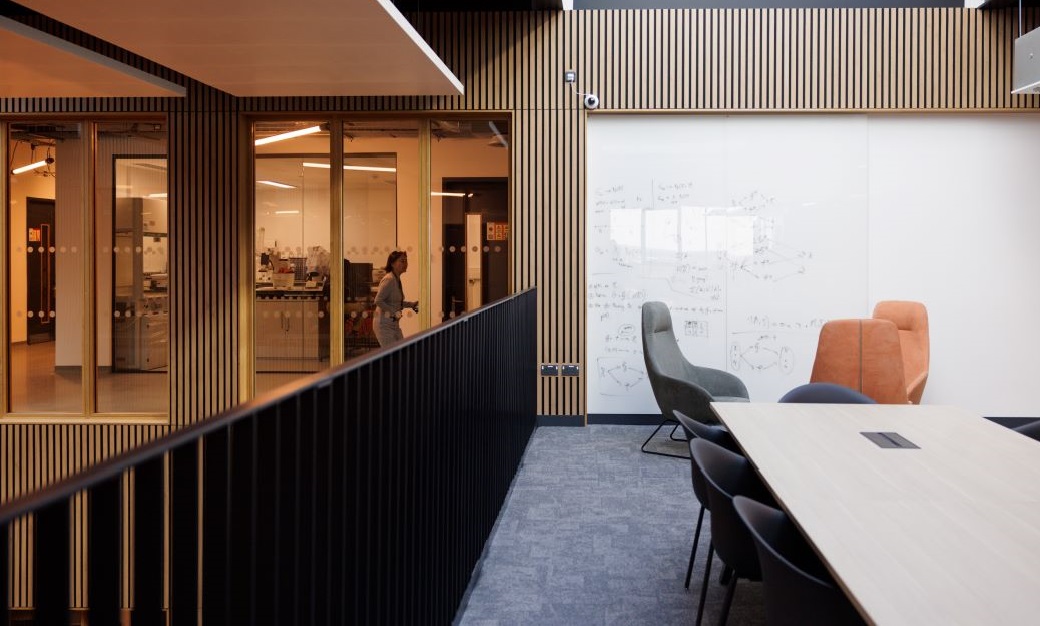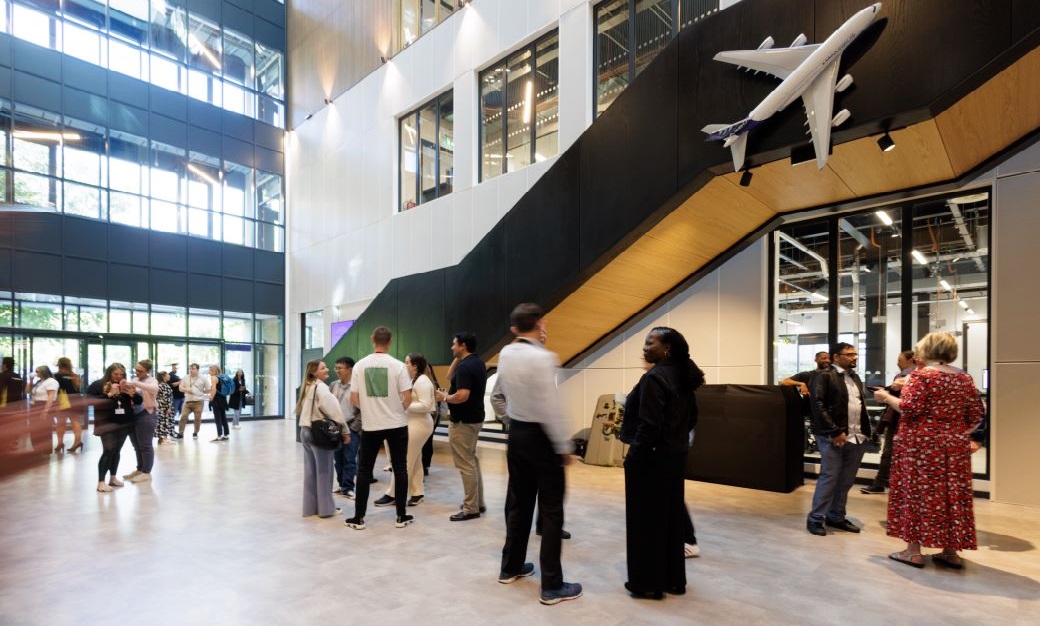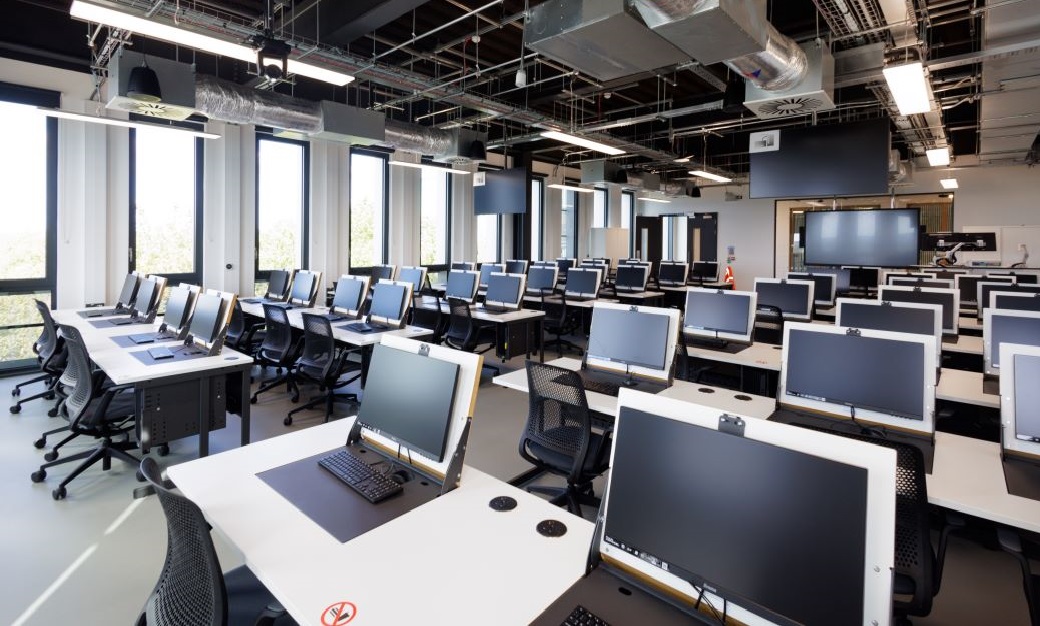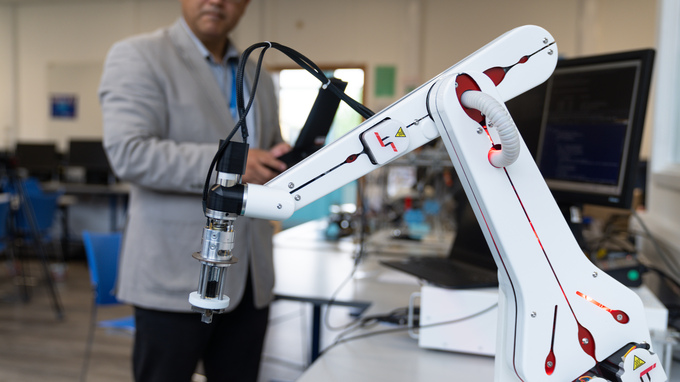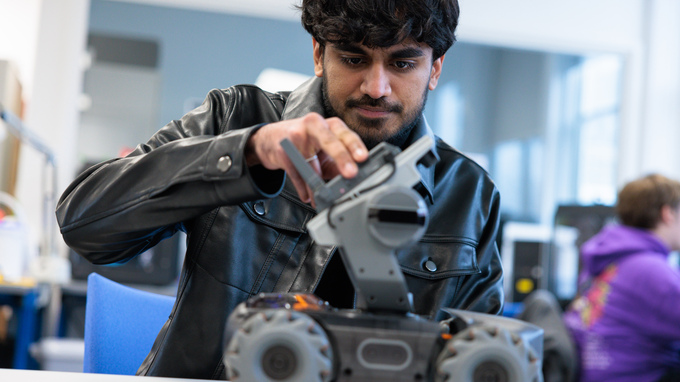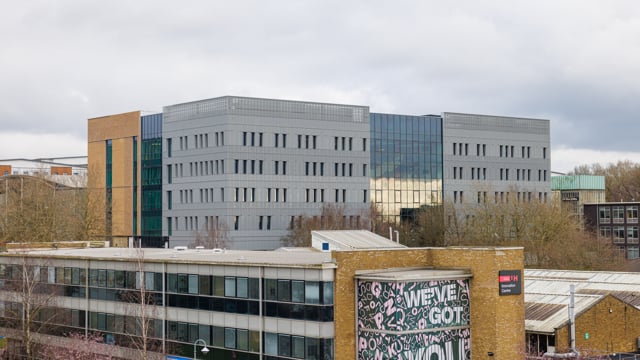Spectra: Herts’ new flagship building
Welcome to our new, state-of-the-art home for our School of Physics, Engineering and Computer Science
The University of Hertfordshire’s new state-of-the-art, School of Physics, Engineering and Computer Science – known as Spectra – has officially opened to students and staff for the new 2024-2025 academic year.
Bringing together the University’s physics, engineering and computer science departments, facilities, equipment and knowledge into one place for the first time, the £100m, five-storey building is the largest structure on the University’s College Lane campus following six years of building work.
An incredible, cutting-edge facility, Spectra will not only transform the learning, teaching and research experience within the fields of science, technology, engineering and mathematics (STEM) for our students and staff, but also have the equipment needed for our academics to progress ground-breaking research.
It will also advance the University’s capacity to partner with local, regional and national businesses, particularly within aerospace, engineering, bioscience and other STEM areas, to support their needs, and together develop and innovate economically viable research and products.
The building has been designed to ensure all research and teaching areas are visible throughout, to encourage wider collaboration by ensuring students and researchers are always aware of what each other are doing. Communal workshops on each floor will further allow staff and students from different subjects to collaborate more efficiently together.
Kitted out with some of the highest spec equipment available, new facilities include:
- two dedicated physics laboratories
- two isolated cyber systems rooms that allow cyber security students to test themselves against cyber-attack
- a £2m suite of wind tunnels; a strong floor to help test material strength
- new robotics labs and a robot football pitch for developing and testing autonomous robot behaviour
- flight simulators that can land in any airport across the world
- a welding bay and controls testing suite, plus two Caterham lightweight sports cars and a Tesla for use in autonomous vehicle design.
With 35% of UK firms reportedly having difficulties recruiting staff with skills in STEM, the increased range of research, education and training made possible by Spectra will also help address crucial skills gaps within the STEM sector.
Aimed at inspiring and developing the next generation of engineers, computer scientists, mathematicians, and physicists - as well as the STEM leaders of tomorrow - the building will be a hub for innovation, research and enterprise benefitting not only Herts’ community, but also the wider county and beyond.

Generated through the local economy

People hours spent on the construction of the Spectra building

Tonnes of steel used in the building. Equivalent to the weight of 126 double-decker Uno buses
Facilities, research and business opportunities in the Spectra building
Research
Research culture at Herts is defined by a strong spirit of curiosity, innovation and enterprise, and feeds into all of our teaching and learning to enrich students’ experience and knowledge.
Our expert researchers are committed to protecting people and the planet by finding innovative and sustainable solutions to the most critical social, environmental and economic challenges facing society today. To further optimise our impact, we work with government and industry partners to develop and optimise new tech, bioscience, robotics, software, AI, engineering, research and more, targeted to help solve critical national issues.
For example, we are a internationally-renowned University in biodetection research, and globally recognised for our work developing new biodetection systems for the military and agriculture sectors that can autonomously detect, collect, process and analyse airborne toxins, bacteria and viruses in real time.
This world-leading status is being reflected with our new Wolfson Centre for Biodetection and Instrumentation Research, located on the top floor of the new Spectra building and equipped with top-of-the-range facilities, following a £750,000 grant from the Wolfson Foundation. We also received a further £13.5m funding grant for our biodetection work from Research England – our largest ever research grant.
This immense support will only propel our capacity for biodetection innovation at Herts at a time where there is an urgent need to enhance our understanding of biological hazards that impact human, plant and animal health. It will expand and progress our sector-leading, research-led development of biodetection technologies against biosecurity threats including airborne pathogens, crop diseases and biowarfare, and strengthen our knowledge of atmospheric processes associated with climate change and its impact.
Professor Daniel McCluskey, Dean of the School of Physics, Engineering and Computer Science explains why our biodetection research is important for the health and safety of the nation.
Find out more about research at Herts.
Business
Physics, Engineering and Computer Science influence all aspects of our lives and help provide and maintain the modern high technology world that drives economies and society.
Businesses, industry and the public sector need talented, experienced and confident graduates that have the skills and advanced knowledge to work effectively in our new, modern, high technology world. It's why we focus on equipping students with up-to-date, industry-relevant knowledge, practical skills and experience. They are taught by exceptional scientists, engineers, computer scientists and mathematicians who are at the forefront of their field, and supported with work placements and more to graduate ready to help solve the challenges of our ever-evolving world.
We also provide local and regional businesses with the facilities and expertise to support them in pioneering new tech and innovation for the future. For example, our new structural Strong Floor testing lab, located on the ground floor of the Spectra building, contains modern facilities that will be used by companies to test the strength of steel girders and beams for large structural buildings.
If you represent a business who wants to discuss partnering with our School of Physics, Engineering and Computer Science, please email business development.
Facilities
Our courses are designed to reflect the needs of industry now and in the future, and are taught using facilities and equipment that include flight and driving simulators, cybersecurity and specialist robotics laboratories, electronics and physics laboratories. To enhance our facilities and transform the way we educate our students, the new sustainable Spectra building will become a hub for innovation, research and enterprise for students, staff and businesses.
The multi-purpose, versatile building will accommodate all of the School of Physics, Engineering and Computer Science teaching staff and researchers under one roof, enhancing the student experience and creating stronger and more supportive academic communities and teaching spaces. The new facilities will replicate the modern working environments that mirror our students’ future careers, and they will benefit from large Experiential Learning Zones, workshops and laboratories as well as flexible teaching and learning environments.
The building will house modelling, simulation and research labs, including our Merlin Flight Simulator and automotive workshop complete with electric vehicle facility, as well as a Strong Floor testing lab, wind tunnel, welding bay and controls testing suite. Students will have access to state-of-the-art cyber security facilities or develop their own 'Formula' racing car, while the upper floors will provide space for workshops, research and computer science, as well as social and meeting spaces to collaborate and socialise.
The computer science labs house telecommunications, robotics, robotics teaching, human-robot interaction and UX empathy labs. The research spaces and hub include space for dark rooms, clean rooms, sample prep labs, calibration and assembly labs. All of this will support our Research Centres in Astrophysics, Atmospheric and Climate Physics, Climate Change, Biodetection Technologies and Computer Science and Informatics.
Physics, Engineering and Computer Science courses at Herts
If you enjoy creating innovative solutions and love pushing boundaries why not consider one of our undergraduate or postgraduate courses.

